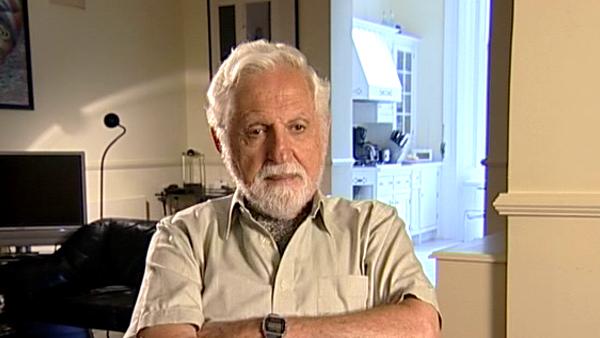NEXT STORY

My knee operation and working at Syntex
RELATED STORIES

NEXT STORY

My knee operation and working at Syntex
RELATED STORIES


|
Views | Duration | |
|---|---|---|---|
| 71. The race to synthesise cortisone | 128 | 02:20 | |
| 72. Working on making the first oral contraceptive | 176 | 07:12 | |
| 73. Getting into academia: moving to Wayne State University | 107 | 05:11 | |
| 74. Deciding to get my knee fused in Mexico | 89 | 03:11 | |
| 75. My knee operation and working at Syntex | 80 | 02:59 | |
| 76. Considering changing career | 81 | 06:00 | |
| 77. Getting a job at Stanford University | 179 | 04:49 | |
| 78. Building a house in California | 121 | 04:43 | |
| 79. Designing my dream house | 106 | 07:41 | |
| 80. Why I wanted to work in academia | 117 | 04:10 |


As I was in Detroit my knee degenerated more and more. And in 1956, so about four or five years after I’d been in... at Wayne I was living on 24 aspirins a day and I had to go again to the hospital for a second biopsy, and again they weren’t sure whether it was tuberculosis. Well they said, you have to put... you really have to end up in crutches and... and some supports or get your knee permanently fused. Now, that’s a major operation. Then you’re in a cast for... at that time it was six or eight months and that would be irreversible. Artificial knees had not been invented yet at that time, and that, of course, was a major decision. But I was in such pain that I decided to do that and discovered that one of the great surgeons for that operation was a Mexican surgeon in Mexico City who himself had that same problem, a fused knee, because of a tubercular infection and had a fairly lousy operation early in his life and that converted him into an orthopaedic surgeon who specialised in this. And he did more knee fusions in one week than most American surgeons at that time did in a year, and he was internationally known. A man named Dr Farill and I then met him on one of my trips and he convinced me that I should have that operation in Mexico, which again was ironic. Just like doing research in Mexico no one would go for medical reasons to Mexico. It was usually the other way around. They would go to the supposedly high-powered America.
Again, it was by far the best decision medically, and I combined that with something. Syntex was more than delighted to get me back because by that time the owners of Syntex had sold out to a Wall Street investment bank, Allen & Company, who converted Syntex into a public company. They really thought this company was really going to go somewhere. The oral contraceptive thing was... was not yet on the market but a lot of things were fairly obvious. And so George Rosenkranz had become president of the company and a friend of mine, Alejandro Zaffaroni an Uruguayan who joined Syntex same time I did as a biochemist, became vice president and then I went back to Syntex as the other vice president. So, on leave of absence from Wayne, because they also didn’t want to lose me... so I really had... Officially I went to Mexico for medical reasons. I mean that was not fake, but I blamed it on the medical thing, but, of course, there was also professional reasons.
Austrian-American Carl Djerassi (1923-2015) was best known for his work on the synthesis of the steroid cortisone and then of a progesterone derivative that was the basis of the first contraceptive pill. He wrote a number of books, plays and poems, in the process inventing a new genre, 'science-in-fiction', illustrated by the novel 'Cantor's Dilemma' which explores ethics in science.
Title: Deciding to get my knee fused in Mexico
Listeners: Tamara Tracz
Tamara Tracz is a writer and filmmaker based in London.
Tags: Detroit, Mexico City, Syntex, tubercular infection, Allen & Company, Alejandro Zaffaroni, George Rosenkranz, Juan Farill
Duration: 3 minutes, 11 seconds
Date story recorded: September 2005
Date story went live: 24 January 2008